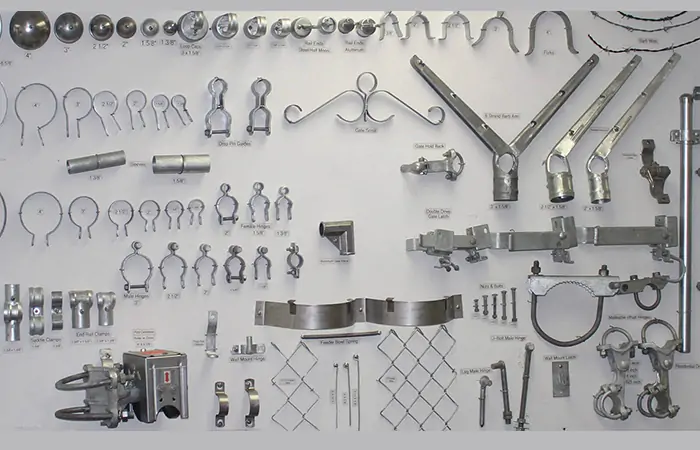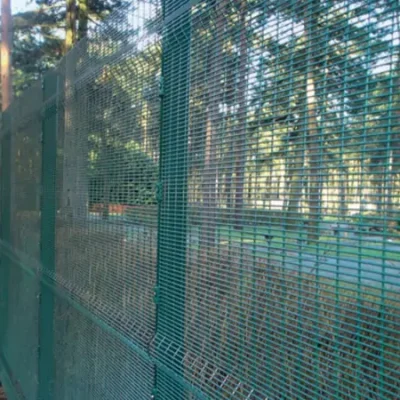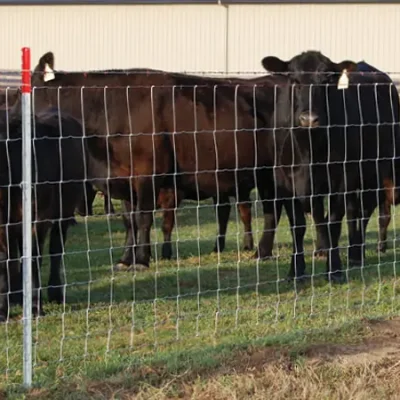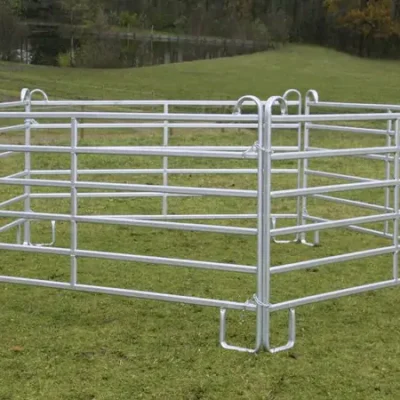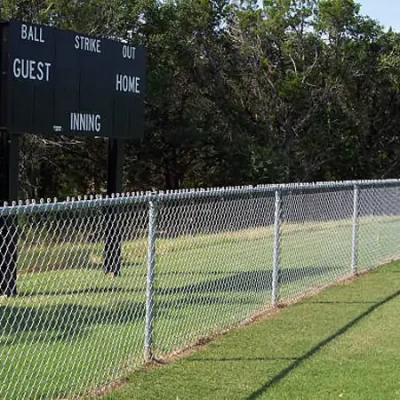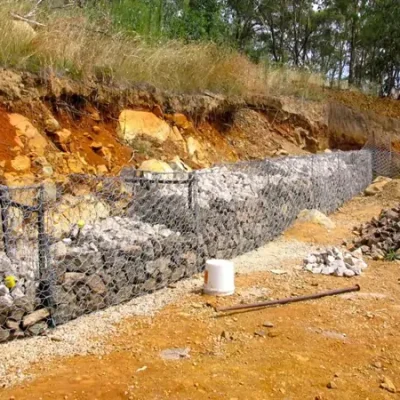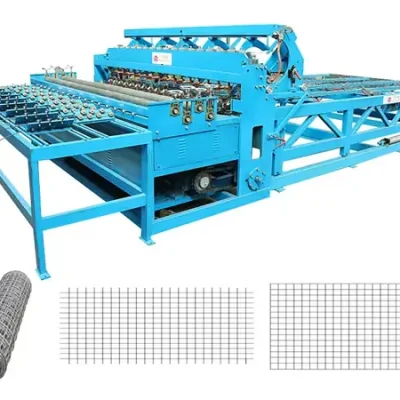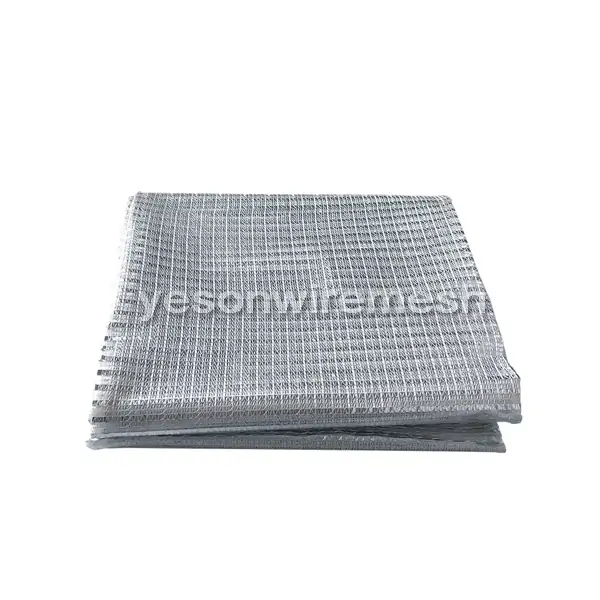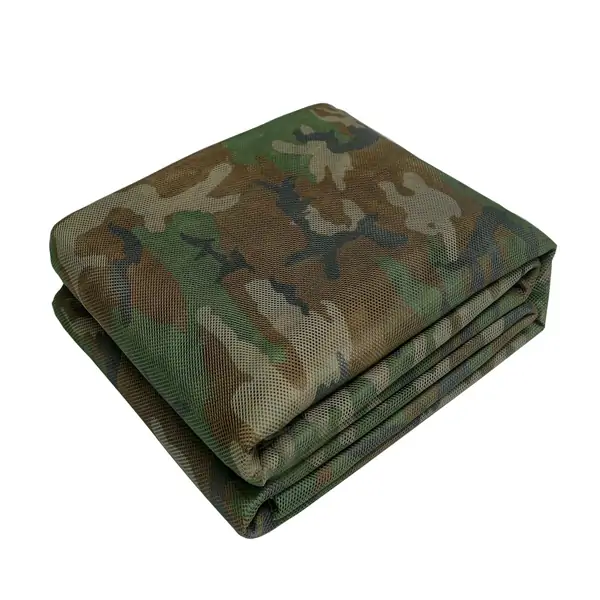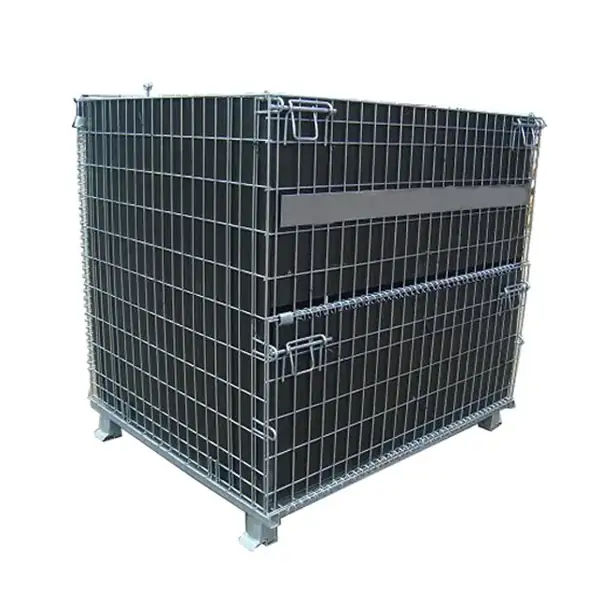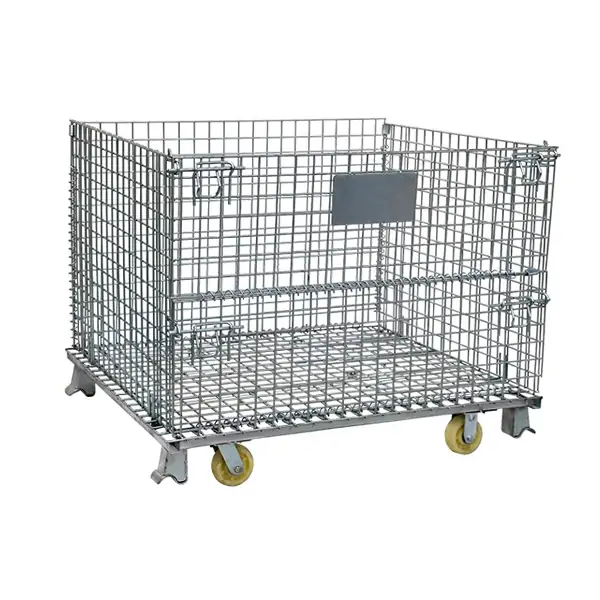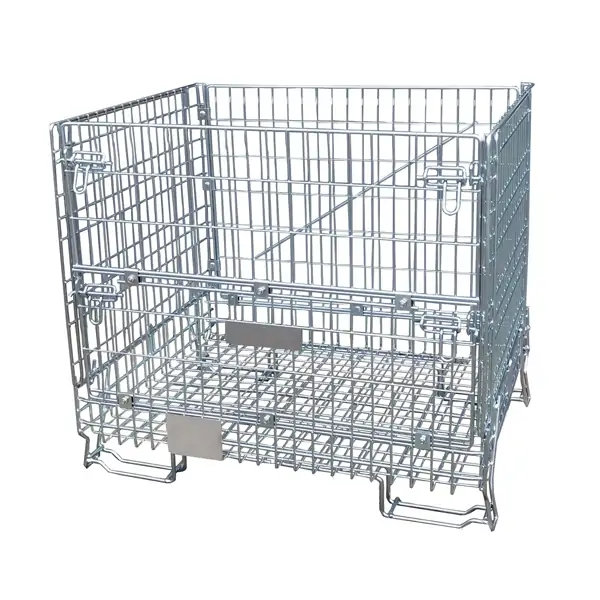Table of Contents
ToggleIntroduction to Chain Link Fencing
Chain link fencing is a widely favored and economical choice for securing various types of properties, including residential, commercial, and industrial ones. This type of fencing is celebrated for its resilience, ease of maintenance, and adaptability, offering dependable security and demarcation options. However, embarking on a fencing endeavor requires a clear understanding of the components and accessories that are part of the process. The following detailed guide will provide you with an in-depth understanding of the chain link fence parts that make up your fence, helping you make an informed decision for your fencing needs.
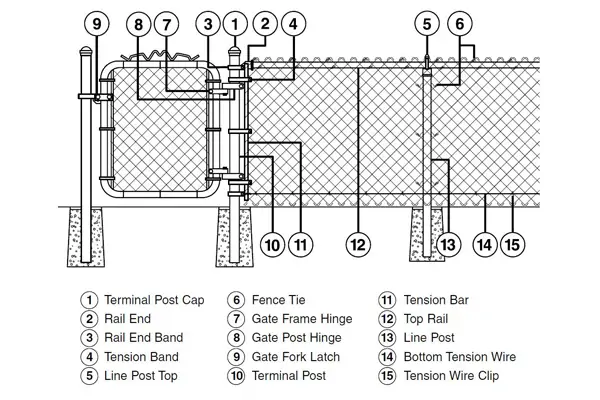
The Essential Parts of Chain Link Fencing
1. Fence Fabric: The Backbone of Your Fence
The fence fabric, commonly made of galvanized steel or PVC-coated wire, forms the actual barrier of a chain link fence. The mesh size (the space between wires) and the gauge (wire thickness) are important factors to consider. Smaller mesh sizes and thicker gauges provide more security, making them ideal for high-security environments like industrial properties and prisons. For residential areas, a standard 2-inch mesh size with a 9- or 11-gauge wire is often sufficient.
2. Fence Posts: The Structural Support
The structural integrity of a chain link fence is largely dependent on its posts, which serve as its primary support. These posts can be categorized into two main types:
- Line Posts: These are strategically positioned at consistent intervals along the length of the fence, providing continuous support and alignment.
- Terminal Posts: Characterized by their robustness and increased weight, these posts are crucial at the fence’s corners, termination points, and at gate locations where additional strength is required.
In selecting the appropriate posts for your chain link fence, it’s essential to evaluate the material and its thickness to guarantee that they can endure various weather conditions and maintain their integrity over an extended period. Posts made from steel that have been galvanized offer superior protection against rust and ensure enduring strength. This choice is particularly beneficial for environments with harsh weather patterns or where the fence is expected to provide long-term service.
3. Rails: Keeping the Structure Intact
The top rail connects the tops of the posts, keeping the structure aligned, while the bottom rail (optional) adds additional support at the base. This prevents sagging and helps the fence maintain its shape. Rails are typically made from steel for strength and are attached using specific hardware like rail ends and caps.
Understanding Chain Link Fence Hardware
1. Tension Bands and Brace Bands
The stability and functionality of a chain link fence are significantly influenced by certain key hardware components, such as tension bands and brace bands, which play indispensable roles in the fence’s assembly.
- Tension Bands: These are integral for fastening the mesh fabric securely to the terminal posts along the fence line. They apply the necessary tension to the fabric, ensuring that it remains smooth and properly aligned.
- Brace Bands: Equally essential, these bands are used to firmly attach the top rails to the posts. They ensure that the top of the fence maintains its structural integrity and alignment, providing a solid barrier.
Though these components may seem minor, they are integral to the fence’s performance, ensuring that it remains upright, taut, and functional. Their presence is critical in maintaining the fence’s intended purpose and appearance.
2. Tension Bars
Tension bars are a vital component in the chain link fence system, designed to maintain the fabric’s alignment and tension. They operate by sliding vertically through the end of the chain link mesh and are secured in place by tension bands.
These bars are instrumental in keeping the fence fabric taut and straight, which is essential for the fence’s overall security and appearance. The correct tension in the fabric not only enhances the fence’s effectiveness as a barrier but also helps to prevent sagging or loosening over time, ensuring that the fence remains a reliable and robust security feature. Regular checks and adjustments of the tension bars are recommended to maintain the fence’s optimal performance.
3. Post Caps and Rail Ends
Post caps serve a dual purpose in the design and functionality of a chain link fence. Primarily, they shield the post tops from the elements, particularly rainwater, which can lead to corrosion and degradation over time. Beyond their protective role, post caps also contribute to the aesthetic appeal of the fence, giving it a neat and professional appearance.
In a similar vein, rail ends are essential connectors that are affixed to the terminal points of the fence rails. These components play a pivotal role in the structural integrity of the fence by ensuring a secure and stable attachment between the rails and the posts. The secure connection provided by rail ends is crucial for the fence’s stability and longevity, as it helps to withstand various environmental stresses and potential impacts.
4. Tie Wires and Hog Rings
The attachment of the chain link fabric to the line posts and rails is facilitated by tie wires and hog rings, which are essential for the fence’s stability and longevity. These fastening elements are responsible for keeping the mesh firmly attached to the structure, preventing any movement or displacement that could compromise the fence’s integrity.
Tie wires are typically used to bind the fabric to the posts, while hog rings are often employed to secure the fabric to the rails. Both methods are effective in ensuring that the chain link fabric remains taut and properly aligned, which is vital for maintaining the fence’s effectiveness as a barrier.
The use of these fastening devices not only enhances the fence’s resistance to environmental factors and potential impacts but also contributes to its overall appearance by providing a neat and uniform look. Regular inspections and maintenance of these fastenings are recommended to ensure that the fence continues to perform optimally over time.
Gate Components: Secure Your Entry Points
When it comes to enhancing the functionality and security of your chain link fence, the gate plays a pivotal role. Here’s a fresh perspective on the essential components for constructing and maintaining a reliable gate:
- Gate Frames: The foundation of any gate is its frame, which comes in two primary configurations: swing and sliding. Constructed from materials such as galvanized steel or aluminum, these frames are designed for strength and resilience, capable of withstanding regular use. The selection of the gate type should be influenced by the spatial constraints of your property and the level of security you wish to achieve.
- Gate Hinges and Latches: For seamless gate operation, robust hinges and latches are indispensable. High-quality materials, including stainless steel and powder-coated metals, are recommended. These materials not only resist rust but also contribute to the hardware’s durability, ensuring that your gate remains operational and secure over time.
- Gate Wheels and Rollers: Should you choose a sliding gate, the inclusion of wheels and rollers is imperative. These components are engineered to bear the gate’s weight, facilitating effortless opening and closing. They are crucial for the gate’s smooth operation and contribute to its overall longevity by reducing friction and wear.
Additional Accessories for Chain Link Fences
1. Privacy Slats
For those looking for privacy, privacy slats are an excellent option. These slats slide vertically into the mesh, blocking visibility while still allowing airflow. They come in various colors and materials, giving you the flexibility to match your fence to your home or business’s aesthetic.
2. Barbed Wire and Razor Wire
Enhancing the security of a chain link fence can be achieved by incorporating additional deterrents such as barbed wire or razor wire. These specialized wires are typically installed at the fence’s upper edge to create a physical barrier that discourages unauthorized access.
- Barbed Wire: Characterized by its sharp, twisted metal points, barbed wire serves as a visual and physical deterrent. It is widely used in various security applications, including residential, commercial, and industrial settings, where an added layer of protection is desired.
- Razor Wire: Also known as concertina wire, razor wire features sharp, flat blades arranged in a spiral pattern. This design makes it highly effective in preventing unauthorized entry, as it is difficult to climb or penetrate. Razor wire is often employed in high-security environments, such as military installations, correctional facilities, and government buildings.
3. Windscreens and Shade Cloths
If your fence is exposed to strong winds or you require additional privacy, windscreens or shade cloths can be installed. These accessories reduce wind resistance and add a layer of privacy to chain link fences, making them ideal for sports facilities or commercial properties.
Coatings and Finishes: Enhancing Durability
1. Galvanized Coating
Galvanized steel is the standard material for chain link fences due to its rust-resistant properties. A zinc coating protects the steel from moisture, extending the fence’s lifespan and ensuring it remains durable in various weather conditions.
2. PVC Coating
For those who want to improve the appearance of their chain link fence, a PVC coating is a great option. This vinyl layer not only adds color but also provides extra protection against rust and wear. Popular colors include green, black, and brown, allowing the fence to blend into its surroundings.
FAQ
1. What is a chain link fence?
A chain link fence is a fencing system made from woven galvanized or PVC-coated steel wire, widely used for residential, commercial, and industrial purposes. It is popular for its cost-effectiveness, durability, and low maintenance requirements.
2. What are the main components of a chain link fence?
The main components of a chain link fence include fence fabric (mesh material), fence posts (line posts and terminal posts), rails (top and bottom), tension bands, tension bars, and other fittings like hinges and gate latches.
3. How do I choose the right fence fabric specifications?
When choosing fence fabric, consider the mesh size and wire gauge. For high-security environments, opt for smaller mesh sizes and thicker wire gauges (e.g., 6 to 9 gauge). For residential areas, a 2-inch mesh size with 9 to 11 gauge wire is commonly used.
4. How long does a chain link fence last?
A chain link fence typically lasts 15-20 years, depending on the material and maintenance. Galvanized steel and PVC-coated fences are more resistant to rust and corrosion, which can extend the fence’s lifespan.
5. How do you install a chain link fence?
Installing a chain link fence involves digging post holes, installing fence posts, connecting the rails, attaching the fence fabric, and installing gates and fittings. If you’re doing a DIY installation, tools like a post hole digger, pliers, and tensioning tools are recommended.
6. What are the benefits of PVC-coated chain link fences?
PVC-coated fences offer additional protection against rust and enhance the fence’s appearance. The coating is available in various colors, such as green, black, and brown, allowing the fence to blend better with the surroundings.
7. Is maintaining a chain link fence expensive?
Maintaining a chain link fence is generally inexpensive. Regular inspections for loose parts or signs of rust, followed by prompt repairs, can prevent further damage. Using galvanized or PVC-coated materials can reduce the need for frequent maintenance.
8. What applications are chain link fences suitable for?
Chain link fences are widely used in residential properties, schools, playgrounds, factories, and warehouses. They provide effective security and can be enhanced with accessories like privacy slats, barbed wire, or windscreen cloth for different requirements.
9. Can chain link fences provide privacy?
Yes, you can enhance privacy by adding privacy slats or installing windscreen cloth. These accessories not only block visibility but also improve the aesthetics and functionality of the fence.
10. Are chain link fences suitable for high-security areas?
Chain link fences can meet high-security needs, especially when additional barbed wire or razor wire is installed on top. These fences are commonly used in industrial sites, prisons, and military areas to effectively deter unauthorized entry.
Conclusion
In conclusion, a thorough comprehension of the various components and accessories that comprise a chain link fence is essential for making astute choices and guaranteeing that your fence serves its purpose effectively and retains its integrity over the long term.
Each element, from the foundational posts to the optional privacy slats, contributes significantly to the fence’s overall performance and endurance. The strategic selection and installation of these parts are what enable your fence to meet its intended objectives, be it enhancing security or demarcating property lines.

